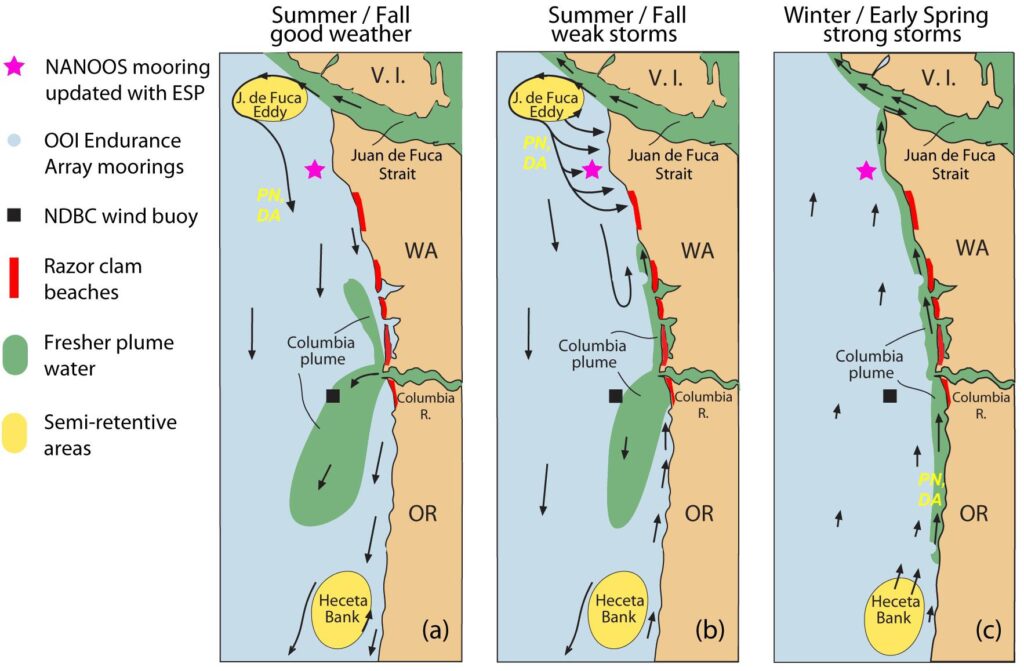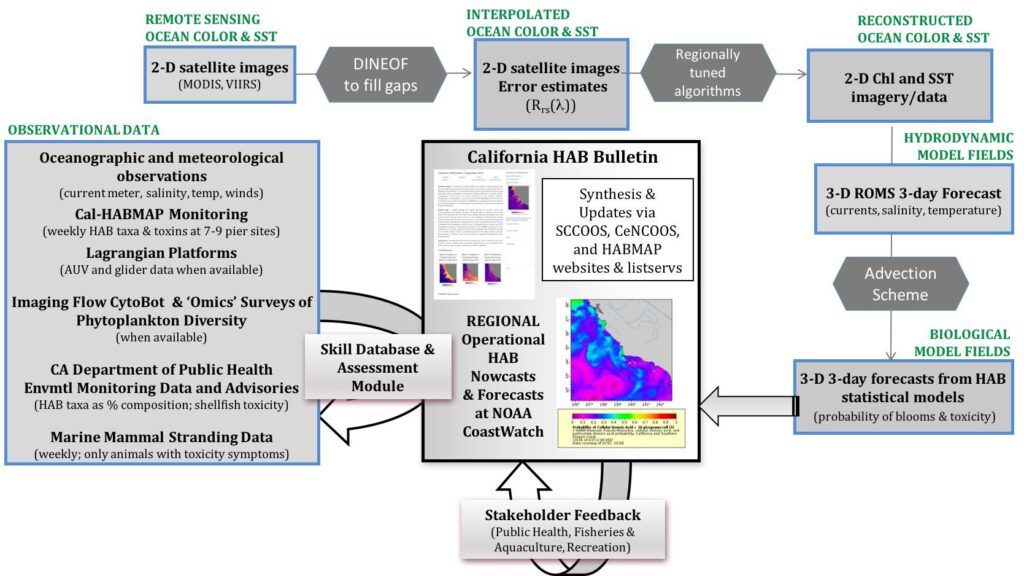Global S&T Development Trend Analysis Platform of Resources and Environment
| NCCOS Science, Funding are Backbone of U.S. HAB Monitoring and Bridge to Global System | |
| admin | |
| 2020-03-24 | |
| 发布年 | 2020 |
| 语种 | 英语 |
| 国家 | 美国 |
| 领域 | 资源环境 |
| 正文(英文) | NCCOS-supported regional harmful algal bloom (HAB) monitoring programs span the United States and help build a global HAB monitoring and prediction system. A recent article in Frontiers in Marine Science documents the scope of regional HAB observing systems around the U.S. The article uses case studies to highlight the importance of the regional HAB monitoring programs and their role for developing sustained, international ocean observing systems to meet United Nations sustainable development goals. Of the approximately 30 HAB observing systems described in the study, about 70 percent have been or are currently supported by NCCOS science and sponsored research funding.  Example of NCCOS-supported research/monitoring that led to an PNW regional HAB prediction system. The schematic diagram of the outer Washington coast shows the locations of semi-retentive oceanographic features that are known to be HAB initiation sites (i.e., the Juan de Fuca eddy and Heceta Bank), ocean observing platforms, razor clamming beaches, and the transport pathways during (a) summer/fall good weather, (b) summer/fall weak storms, and (c) winter/early spring strong storms. PN and DA are Pseudo-nitzschia and domoic acid, respectively, and indicate the pathways that toxic HABs can take from HAB initiation sites to coastal beaches. Figure Anderson et al. 2019 and modified from Hickey et al. 2013. HABs are a global problem in nearly all freshwater and marine systems, and regional efforts are underway worldwide to create state-of-the-art HAB monitoring and forecasting tools, vulnerability assessments, and observing networks. In the U.S., regional efforts encompass Alaska, Pacific Northwest, California, Gulf of Mexico, Gulf of Maine, Great Lakes, and the U.S. Caribbean islands. The article examines several regional programs in the U.S., European Union, and Asia and concludes that no one-size-fits-all approach exists. The article also gives recommendations for scaling up regional programs to a global observing system for HABs. The regional HAB observation activities described are supported by NCCOS MERHAB, ECOHAB, PCMHAB, Event Response, Autonomous Sensor Development, and Monitoring and Forecasting programs. Citation: Anderson, Clarissa R., Elisa Berdalet, Raphael M. Kudela, Caroline K. Cusack, Joe Silke, Eleanor O’Rourke, Darcy Dugan, Molly McCammon, Jan A. Newton, Stephanie K. Moore, Kelli Paige, Steve Ruberg, John R. Morrison, Barbara Kirkpatrick, Katherine Hubbard, and Julio Morell. 2019. Scaling Up From Regional Case Studies to a Global Harmful Algal Bloom Observing System. Frontiers in Marine Science. 22 May 2019. https://doi.org/10.3389/fmars.2019.00250  An integrative schematic of the in situ data sets, remote sensing imagery, and model output that support production of the California Harmful Algae Risk Mapping System (C-HARM) for blooms and domoic acid events. Stakeholder engagement is conducted via the monthly CA HAB Bulletin. From Anderson et al. 2019 and modified from Anderson et al. 2016.
|
| URL | 查看原文 |
| 来源平台 | National Centers for Coastal Ocean Science |
| 文献类型 | 新闻 |
| 条目标识符 | http://119.78.100.173/C666/handle/2XK7JSWQ/270338 |
| 专题 | 资源环境科学 |
| 推荐引用方式 GB/T 7714 | admin. NCCOS Science, Funding are Backbone of U.S. HAB Monitoring and Bridge to Global System. 2020. |
| 条目包含的文件 | 条目无相关文件。 | |||||
| 个性服务 |
| 推荐该条目 |
| 保存到收藏夹 |
| 查看访问统计 |
| 导出为Endnote文件 |
| 谷歌学术 |
| 谷歌学术中相似的文章 |
| [admin]的文章 |
| 百度学术 |
| 百度学术中相似的文章 |
| [admin]的文章 |
| 必应学术 |
| 必应学术中相似的文章 |
| [admin]的文章 |
| 相关权益政策 |
| 暂无数据 |
| 收藏/分享 |
除非特别说明,本系统中所有内容都受版权保护,并保留所有权利。
修改评论